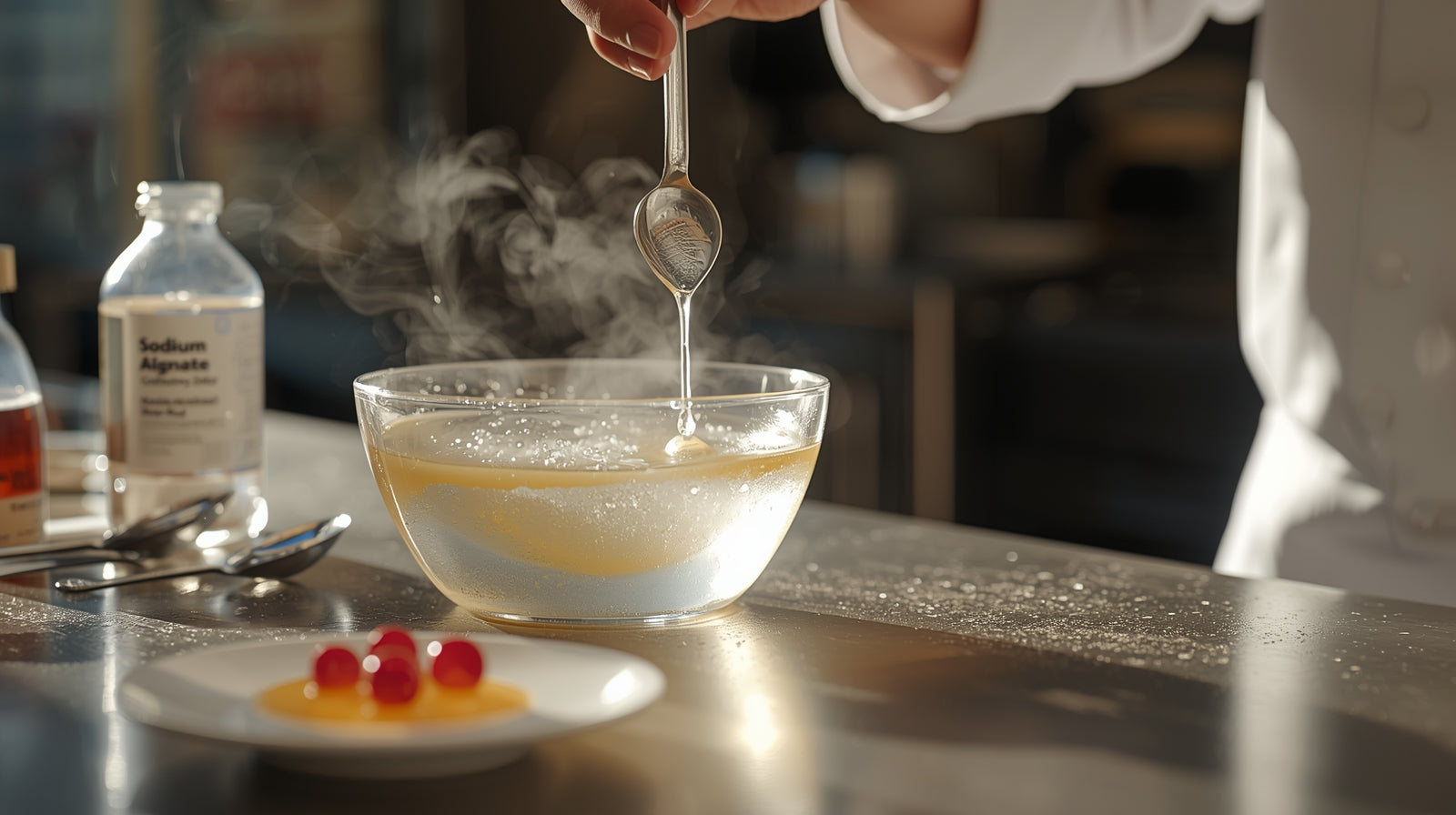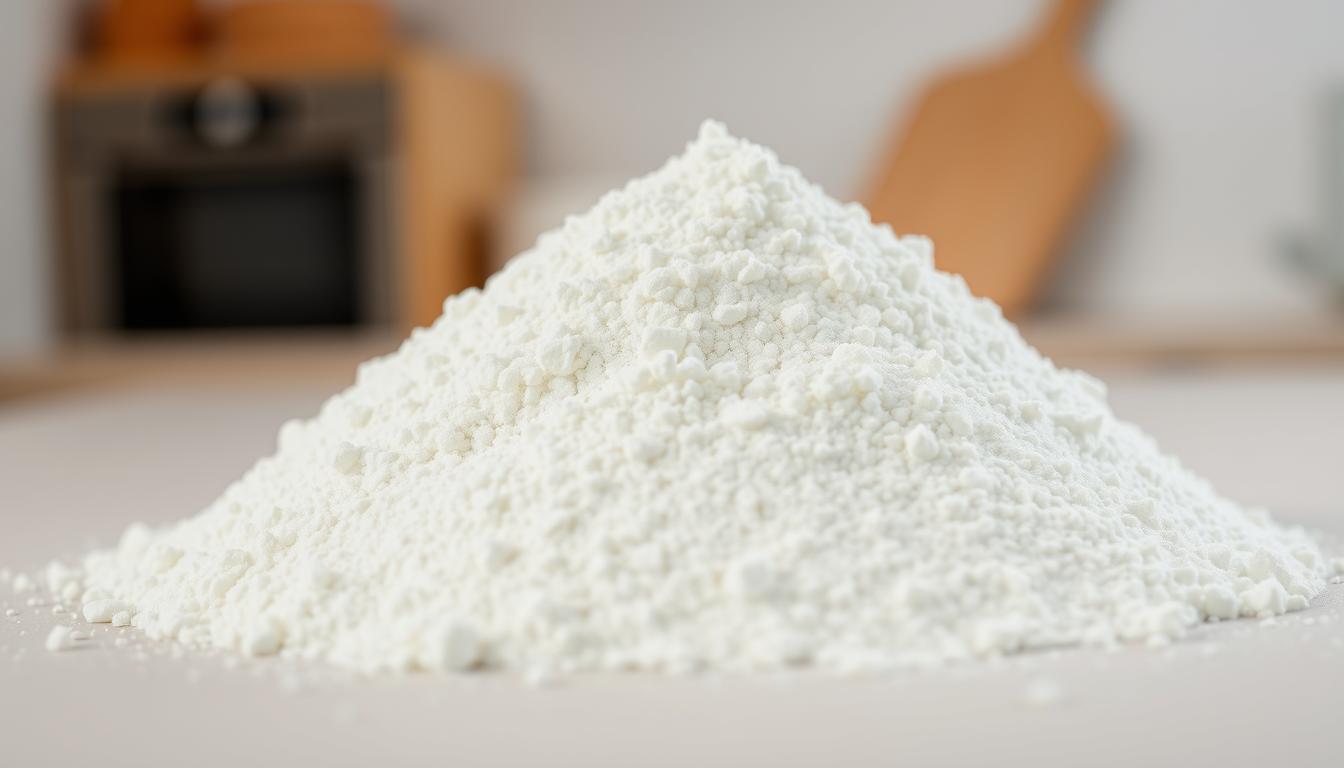
How to Use Amidated Low Methoxyl Pectin in Jams & Gels
SUBSCRIBE TO OUR BLOG
Promotions, new products, and recipes.
Pectin is a versatile and widely used ingredient in the food industry, serving as a natural gelling agent, stabilizer, and thickener. Among the various types of pectin, amidated low methoxyl pectin (ALM pectin) stands out as a unique and valuable option. In this article, we will explore how to use ALM pectin, its production process, and highlight the differences between ALM pectin and regular pectin.
What is Amidated Low Methoxyl Pectin?
Amidated low methoxyl pectin is a modified form of pectin that has been chemically altered to enhance its gelling properties. Regular pectin is extracted from plant sources like citrus peels and apple pomace. It naturally contains a significant amount of methoxyl groups, which are responsible for the gelling process. However, amidation, a chemical process, is applied to the pectin to reduce the number of methoxyl groups, resulting in ALM pectin.
Production of Amidated Low Methoxyl Pectin:
The production of amidated low methoxyl pectin involves several steps:
Extraction: Pectin is first extracted from citrus peels or apple pomace using hot acid, followed by precipitation with alcohol to obtain a crude pectin extract.
Amidation: The crude pectin extract undergoes amidation by treating it with ammonia or other alkali sources. This process replaces some of the methoxyl groups on the pectin molecules with amide groups, leading to the formation of ALM pectin.
Purification: After amidation, the ALM pectin is purified to remove impurities and any remaining reactants, ensuring the final product is safe for consumption.
Drying: The purified ALM pectin is dried into a powder form, which is convenient for storage and transportation.
Differences Between Regular Pectin and Amidated Low Methoxyl Pectin:
Gelling Properties: The main difference between regular pectin and ALM pectin lies in their gelling properties. Regular pectin requires a high concentration of sugar and an acidic environment, such as in traditional jam-making, to form a gel. On the other hand, ALM pectin can form a gel in the presence of calcium ions without the need for high sugar or acidity levels. This makes it particularly useful for creating low-sugar or sugar-free jams, jellies, and other products.
pH and Calcium Dependency: Regular pectin requires a low pH environment (high acidity) to gel properly. In contrast, ALM pectin is less pH-dependent and can set under a broader range of pH levels. Additionally, ALM pectin's gelling process is primarily driven by the presence of calcium ions, which makes it an ideal choice for products that are not naturally acidic.
Texture and Syneresis: ALM pectin produces gels with a smoother and softer texture compared to regular pectin, which tends to set firmer. Furthermore, ALM pectin gels exhibit reduced syneresis, which is the release of liquid from the gel, resulting in improved product stability and appearance.

Using Amidated Low Methoxyl Pectin:
ALM pectin is used in a variety of food applications, including:
Low-Sugar Jams and Jellies: ALM pectin is particularly valuable for making jams and jellies with reduced sugar content, catering to health-conscious consumers and individuals with dietary restrictions.
Dairy and Plant-Based Products: It can be used to stabilize and improve the texture of dairy products like yogurt and cream desserts, as well as plant-based alternatives like vegan spreads.
Fruit Preparations: ALM pectin finds application in fruit fillings for bakery products, enhancing the texture and stability of the fillings.
Confectionery: It can be utilized in the production of fruit-flavored gummies and candies to provide a desirable chewy texture.
Beverage Applications: ALM pectin can be used to create fruit-based beverages and juice concentrates with enhanced mouthfeel and suspension of fruit particles.
Example Recipe Using Amidated Low Methoxyl Pectin
Low-Sugar Mixed Berry Chia Jam Recipe
Ingredients:
2 cups mixed berries (strawberries, blueberries, raspberries, blackberries)
2 tablespoons chia seeds
1/4 cup water
1/4 cup honey or your preferred sweetener
2 teaspoons lemon juice
2 teaspoons amidated low methoxyl pectin
Instructions:
Prepare the Fruit: Wash the mixed berries thoroughly and remove any stems or leaves. If using larger fruits like strawberries, chop them into smaller pieces for even cooking.
Cook the Berries: In a saucepan, add the mixed berries and water. Heat the mixture over medium heat, stirring occasionally to prevent sticking. Cook the berries for about 5-7 minutes until they soften and release their juices.
Mash the Berries: Use a potato masher or a fork to gently mash the softened berries. Leave some berry chunks for texture.
Add Sweetener and Lemon Juice: Stir in the honey (or your preferred sweetener) and lemon juice into the mashed berries. Continue to cook for another 2 minutes, allowing the flavors to meld.
Add Chia Seeds: Sprinkle the chia seeds over the berry mixture and stir well to incorporate. Chia seeds act as a natural thickener and will help achieve the desired jam-like consistency.
Prepare Amidated Low Methoxyl Pectin: In a separate small bowl, mix the amidated low methoxyl pectin with a little water to form a slurry. Ensure there are no lumps.
Incorporate Pectin Slurry: Slowly pour the pectin slurry into the berry mixture, stirring constantly to avoid clumping. Continue to cook the jam for an additional 5 minutes to activate the gelling properties of the pectin.
Test for Gel Set: To check if the jam has reached the desired consistency, place a small spoonful of the mixture on a chilled plate. Allow it to cool for a few seconds. If the jam wrinkles when you push it with your finger, it's ready. If not, cook it for a few more minutes and retest.
Jar the Jam: Once the jam has achieved the desired gel set, remove the saucepan from the heat. Let it cool for a few minutes before transferring the jam into clean, sterilized jars.
Store and Serve: Seal the jars tightly and let them cool to room temperature before refrigerating. The jam will continue to thicken as it cools. This low-sugar mixed berry chia jam can be enjoyed on toast, as a topping for yogurt, or even as a filling for pastries.
Note: Since this jam is made with amidated low methoxyl pectin, it doesn't require high levels of sugar to set. Feel free to adjust the sweetness according to your preference. Additionally, this jam recipe uses chia seeds as a natural thickener, which also adds nutritional value in the form of omega-3 fatty acids and dietary fiber. Enjoy your delicious, homemade, low-sugar mixed berry chia jam!
Conclusion:
Amidated low methoxyl pectin is a valuable tool in the food industry, offering unique gelling properties and versatility. Its ability to gel without the need for high sugar or acidity levels makes it an excellent choice for various low-sugar and sugar-free applications. Whether it's crafting healthier jams, stabilizing dairy products, or enhancing the texture of confectioneries, ALM pectin proves to be a beneficial and innovative ingredient for modern food formulations.
Have you used Amidated Low Methoxyl Pectin? Please share with us in the comments section below!


|
About the Author Ed is the founder of Cape Crystal Brands, editor of the Beginner’s Guide to Hydrocolloids, and a passionate advocate for making food science accessible to all. Discover premium ingredients, expert resources, and free formulation tools at capecrystalbrands.com/tools. — Ed |
Enjoyed this post? Subscribe to The Crystal Scoop
Food-science tips, ingredient know-how, and recipes. No spam—unsubscribe anytime.
- Choosing a selection results in a full page refresh.



